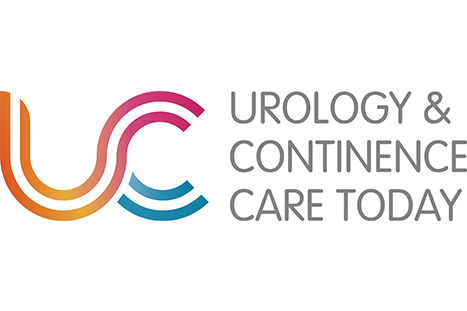References
Bailey S, West M (2022) What is compassionate leadership? King’s Fund Publications. Available online: https://www.kingsfund.org.uk/publications/what-is-compassionate-leadership
Ballantyne H, Achour N (2022) The challenges of nurse redeployment and opportunities for leadership during Covid-19 pandemic. Disaster Medicine and Public Health Preparedness. Cambridge University Press
Bosanquet J (2022) Reflective supervision — it’s no longer if and why, it’s when and how. Nurs Times [online], 18 January. Available online: https://www.nursingtimes.net/opinion/reflective-supervision-its-no-longer-if-and-why-its-when-and-how-18-01-2022/
Bulman C, Schutz S (2004) Reflective Practice in Nursing. Blackwell Publishing, Oxford
Butterworth T (2022) What is clinical supervision and how can it be delivered in practice? Nurs Times 118(2): 20–2
Chapman H (2017) Nursing theories 2: clinical supervision. Nurs Times, 30 December. Available online: https://www.nursingtimes.net/roles/nurse-educators/nursing-theories-2-clinical-supervision-27-11-2017/
Cook G (2022) Make time available for good quality clinical supervision. Nurs Times [online], 1 February. Available online: https://www.nursingtimes.net/opinion/make-time-available-for-good-quality-clinical-supervision-01-02-2022/
Dunkley-Bent J (2017) A-EQUIP: the new model of midwifery supervision. Br J Midwifery 25(5): 278–9
Fischer SA (2017) Developing nurses’ transformational leadership skills. Nurs Standard 31(51): 54–9
Ford M (2021) Nurses ‘chronically exhausted’ amid latest surge of Covid-19. Nurs Times [online], 7 January. Available online: www.nursingtimes.net/news/coronavirus/nurses-chronically-exhausted-amid-latest-surge-of-covid-19-07-01-2021/
Miller WR, Rollnick S (2013) Motivational Interviewing: Helping People Change. 3rd edn. The Guilford Press, New York
NHS Confederation (2021) Real risk that thousands of NHS staff will leave unless they are allowed to recover. NHS Confederation, 24 March 2021. Available online: https://www.nhsconfed.org/news/real-risk-thousands-nhs-staff-will-leave-unless-they-are-allowed-recover
NHS England and NHS Improvement (2021) Professional Nurse Advocate A-EQUIP model: a model of clinical supervision from nurses. NHS England and NHS Improvement, London: PARR799
Stacey G, Aubeeluck A, Cook G (2018) Resilience-based clinical supervision. Foundation of Nursing Studies. Available online: www.Fons.org/learning-zone/clinical-supervision-resources
West M, Bailey S, Williams E (2020) The courage of compassion — supporting nurses and midwives to deliver high-quality care. King’s Fund. Available online: www.kingsfund.org.uk
West MA (2021) Compassionate leadership. Swirling Leaf Press
Whitmore J (2017) Coaching for performance. 5th edn. Nicholas Brealey Publishing
Young C (2022) Tissue viability post-pandemic; advocating for individual and team reflection, reset and restoration. Presentation, Wound Care Today Conference 2022
Ballantyne H, Achour N (2022) The challenges of nurse redeployment and opportunities for leadership during Covid-19 pandemic. Disaster Medicine and Public Health Preparedness. Cambridge University Press
Bosanquet J (2022) Reflective supervision — it’s no longer if and why, it’s when and how. Nurs Times [online], 18 January. Available online: https://www.nursingtimes.net/opinion/reflective-supervision-its-no-longer-if-and-why-its-when-and-how-18-01-2022/
Bulman C, Schutz S (2004) Reflective Practice in Nursing. Blackwell Publishing, Oxford
Butterworth T (2022) What is clinical supervision and how can it be delivered in practice? Nurs Times 118(2): 20–2
Chapman H (2017) Nursing theories 2: clinical supervision. Nurs Times, 30 December. Available online: https://www.nursingtimes.net/roles/nurse-educators/nursing-theories-2-clinical-supervision-27-11-2017/
Cook G (2022) Make time available for good quality clinical supervision. Nurs Times [online], 1 February. Available online: https://www.nursingtimes.net/opinion/make-time-available-for-good-quality-clinical-supervision-01-02-2022/
Dunkley-Bent J (2017) A-EQUIP: the new model of midwifery supervision. Br J Midwifery 25(5): 278–9
Fischer SA (2017) Developing nurses’ transformational leadership skills. Nurs Standard 31(51): 54–9
Ford M (2021) Nurses ‘chronically exhausted’ amid latest surge of Covid-19. Nurs Times [online], 7 January. Available online: www.nursingtimes.net/news/coronavirus/nurses-chronically-exhausted-amid-latest-surge-of-covid-19-07-01-2021/
Miller WR, Rollnick S (2013) Motivational Interviewing: Helping People Change. 3rd edn. The Guilford Press, New York
NHS Confederation (2021) Real risk that thousands of NHS staff will leave unless they are allowed to recover. NHS Confederation, 24 March 2021. Available online: https://www.nhsconfed.org/news/real-risk-thousands-nhs-staff-will-leave-unless-they-are-allowed-recover
NHS England and NHS Improvement (2021) Professional Nurse Advocate A-EQUIP model: a model of clinical supervision from nurses. NHS England and NHS Improvement, London: PARR799
Stacey G, Aubeeluck A, Cook G (2018) Resilience-based clinical supervision. Foundation of Nursing Studies. Available online: www.Fons.org/learning-zone/clinical-supervision-resources
West M, Bailey S, Williams E (2020) The courage of compassion — supporting nurses and midwives to deliver high-quality care. King’s Fund. Available online: www.kingsfund.org.uk
West MA (2021) Compassionate leadership. Swirling Leaf Press
Whitmore J (2017) Coaching for performance. 5th edn. Nicholas Brealey Publishing
Young C (2022) Tissue viability post-pandemic; advocating for individual and team reflection, reset and restoration. Presentation, Wound Care Today Conference 2022
This piece was first published in the Journal of Community Nursing. To cite this article use: Young C (2022) Team reflection, reset and restoration. J Comm Nurs 36(5): 63-66


